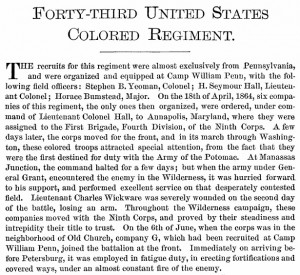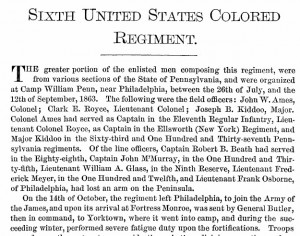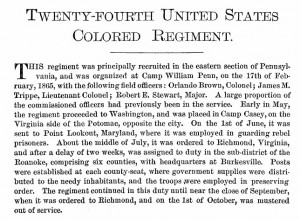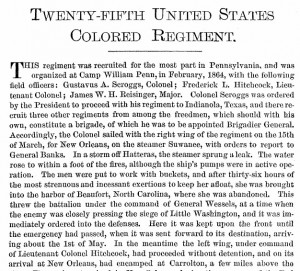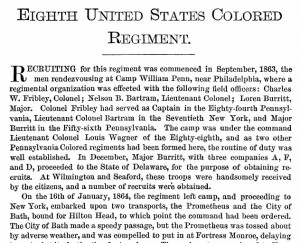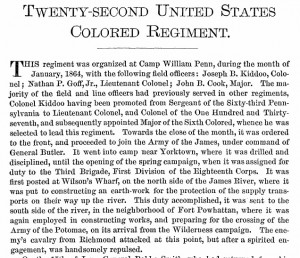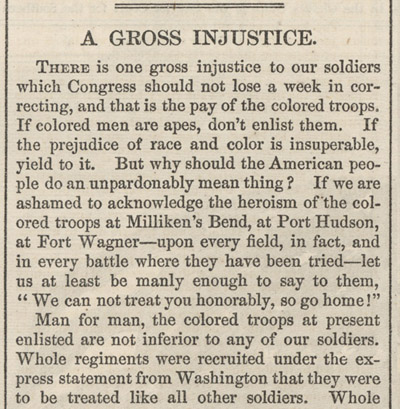 African American soldiers in the United States Colored Troops originally did not receive equal pay. Some northerners demanded that Congress take action and change the policy. This editorial, which was published in Harper’s Weekly on February 13, 1864, asked readers to consider the issue:
African American soldiers in the United States Colored Troops originally did not receive equal pay. Some northerners demanded that Congress take action and change the policy. This editorial, which was published in Harper’s Weekly on February 13, 1864, asked readers to consider the issue:
- “But the point for every honest man to ponder is this: We invited the colored man to fight for us: they have shown themselves brave, clever, and obedient, and we refuse to pay them what we pay other soldiers. Not to speak again of the sheer breach of faith and wanton injustice of such conduct, a distinction like this, even if it were honorably made, tends to maintain a feeling of caste which would be fatal to the army. All that we ask is fair play for every man who will risk his life for the country; and against foul play…we shall not fail to protest as earnestly and persistently as we can.”
Congress eventually instituted equal pay in June 1864.
(Courtesy of the House Divided Project – “A Gross Injustice,” Harper’s Weekly, February 13, 1864, p. 98: 2.)


